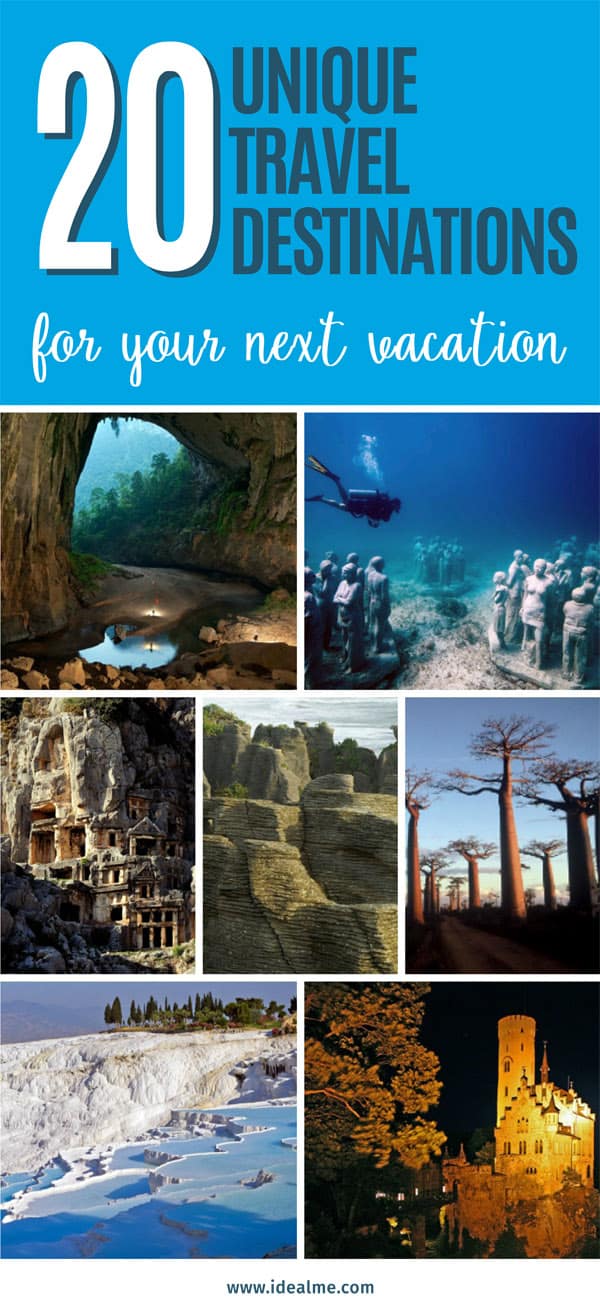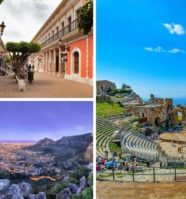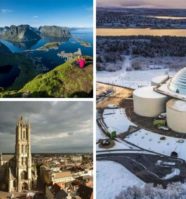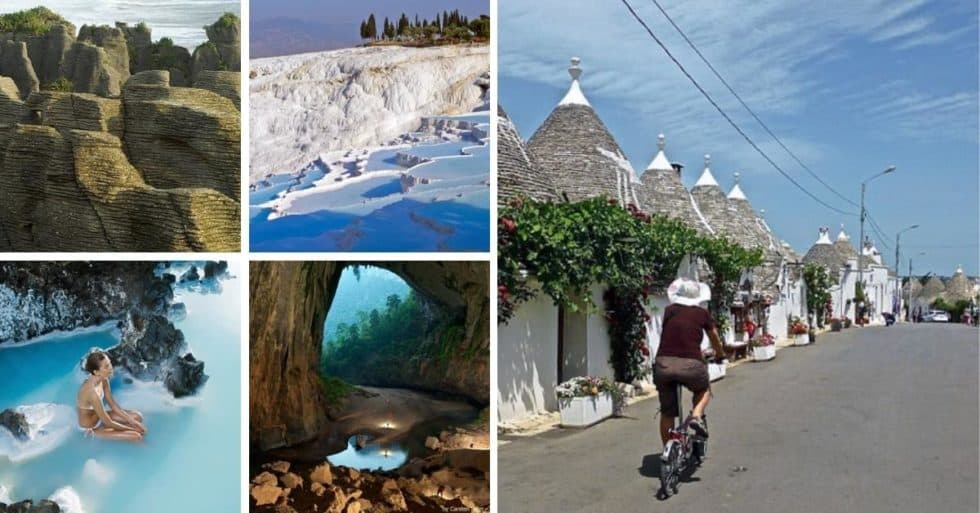
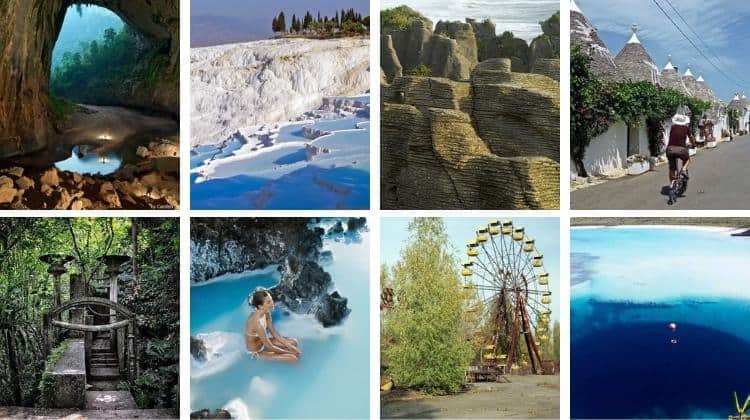
If you’re looking for a more memorable trip on your next vacation, you might just want to check out some unique travel destinations this time around. There are not a lot of places like these destinations, which means it will be worth the trip and experience.
These are not your usual vacation trips where you do the same old thing – party, shop and take selfies. Although, it’s guaranteed you’d want to take selfies in these!
Check out the 20 unique travel destinations we’ve gathered here for you and see if any of these will pique your interest.
Son Doong Cave, Vietnam
Son Doong cave (Vietnamese: Hang Son Doong) is world's largest cave, located in Quang Binh province, Vietnam. It was discovered by a local man named Ho Khanh in 1991 and recently discovered in 2009 by British cavers, led by Howard Limbert. The name “Son Doong” cave means “mountain river cave”, It was created 2-5 million years ago by river water eroding away the limestone underneath the mountain Where the limestone was weak, the ceiling collapsed creating huge skylights.
Via Son Doong Cave
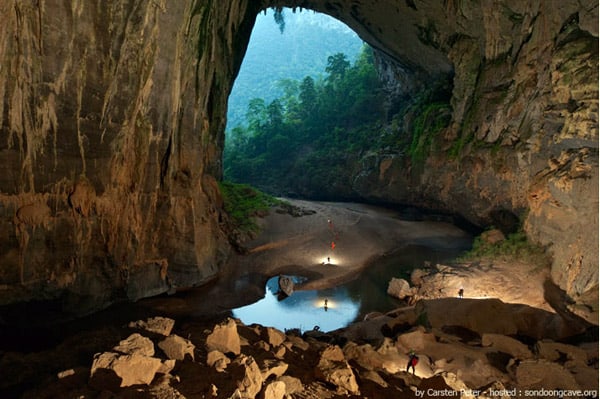
Las Pozas, Xilitla, Mexico
Las Pozas, Xilitla was the creation of Edward James, the eccentric English poet and artist, and patron of the Surrealist movement. For the next ten years Edward used “Las Pozas” to plant orchids and as a home for exotic animals. Inspired by both his orchids and the vegetation of the Huastecan jungle, the design of “Las Pozas” emerged.
Via Fondo Xilitla
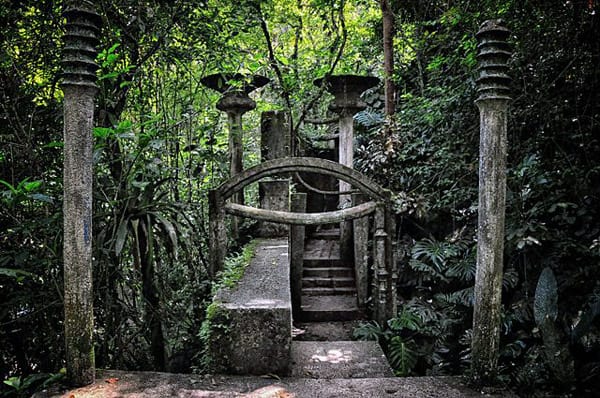
Pancake Rocks, New Zealand
The Pancake Rocks that Punakaiki is famous for, are limestone formations that began forming 30 million years ago. When lime-rich fragments of dead marine creatures were deposited on the seabed, then overlaid by weaker layers of soft mud and clay. Earthquakes raised the seabed above sea level to form the coastal cliffs and coastline. The sea, wind, and rain have since etched out the soft layers to form the unusual rock formations we see today.
Via Punakaiki
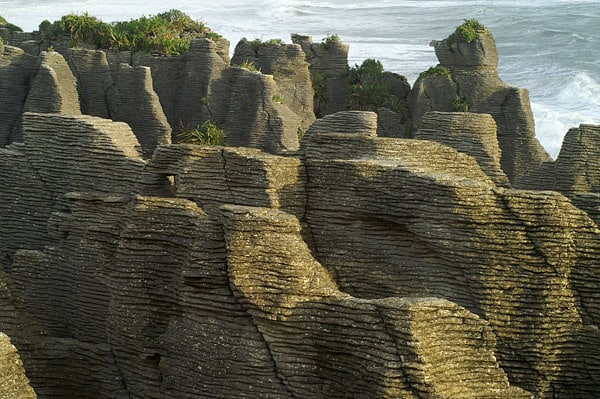
Dean’s Blue Hole, Bahamas
Dean's Blue Hole is the deepest blue hole in the world and the second largest underwater chamber. This warm salt-water swimming pool dips some 663 feet (203 meters) into the ocean floor right offshore. At the surface, it is 80 x 120 feet (25 x 35m) but opens out after 60 feet (20m) into a cavern with a diameter of at least 330 feet (100 m).
Via The Islands Of The Bahamas
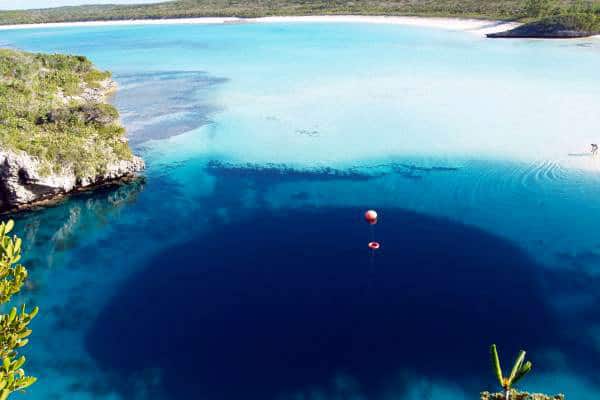
Alberobello, Italy
Alberobello is famous for its unique small historical houses called trullo (plural trulli). The name of the city originated from the medieval Latin name for the region “siva arboris belli” (The wood of the tree of war). Alberobello is a Unesco World Heritage site since 1996, thanks to the unique architectural and historical value of trulli houses. They are one of the best examples of vernacular architecture in Europe.

Pamukkale, Turkey
Pamukkale in Aegean Turkey is also called the “Cotton Castle”. Due to the white, cottony appearance of the mineral bath spas that abound the province – which is rich in calcium. Known as a “spa town” since the Roman era. Tourists travel to Pamukkale to relax in its warm, soothing, and therapeutic waters.
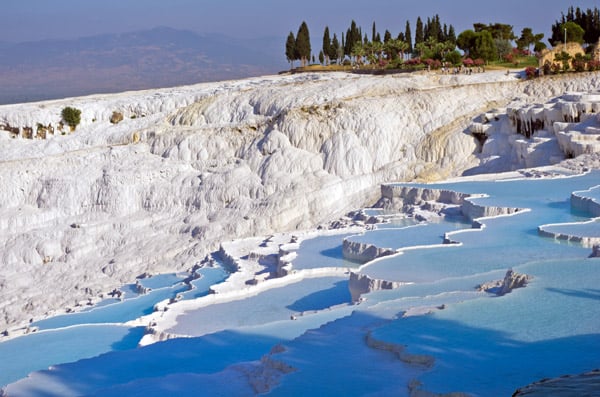
Puerto Mosquito (Mosquito Bay), Puerto Rico
Puerto Mosquito (Mosquito Bay) is on the southern shore of the island of Vieques. This magical bioluminescent bay (bio bay) is officially the brightest recorded in the world by Guinness Book of World Records 2008.
Via Vieques

The Blue Lagoon, Iceland
In 1976, during operation of the nearby geothermal power plant, the Blue Lagoon was formed. In the years that followed, people began to bathe in the unique water and apply the silica mud to their skin. Those with psoriasis noticed an incredible improvement in their condition. Over the years, Blue Lagoon has innovated in harnessing this gift of nature to develop different spa services and products. Today, Blue Lagoon is recognized as one of the wonders of the world.
Via Blue Lagoon

Museo Subacuático de Arte, Cancun, Mexico
The Museum aims to demonstrate the interaction between art and environmental science and form part of a complex reef structure for marine life to colonize and inhabit whilst increasing biomass on a grand scale. All of the sculptures are fixed to the seabed and made from specialized materials used to promote coral life. The total installations occupy an area of over 420sq meters of a barren substrate and weighing in at over 200 tons.
Via MUSA
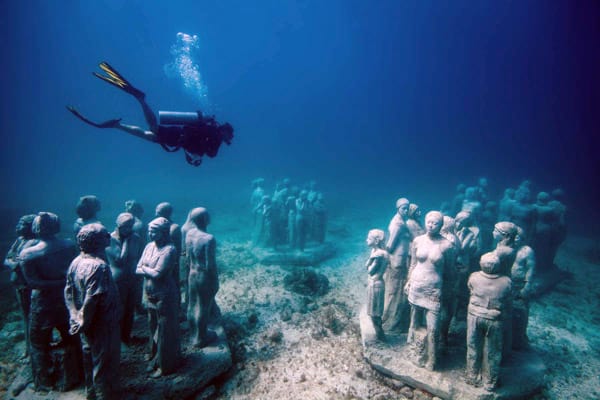
Chernobyl, Ukraine
The guided tours offer a safe passage through one of the most dangerous places on earth. Forbes magazine named Chernobyl as one of the unique places to visit, and more and more people then find their way into the hastily abandoned houses and weathered buildings. As a tourist, you pay around 115 Euros for a visit to the site. Visitors are driven by bus to the ”forbidden zone” to where only people with special permission are allowed. Most of the surface covered by the zone is relatively safe but there are also places like the red forest and the vehicle scrap yard where radiation levels are still very high. Be sure to follow the guide’s advice at all time and do not leave the roads.
Via Los Apos
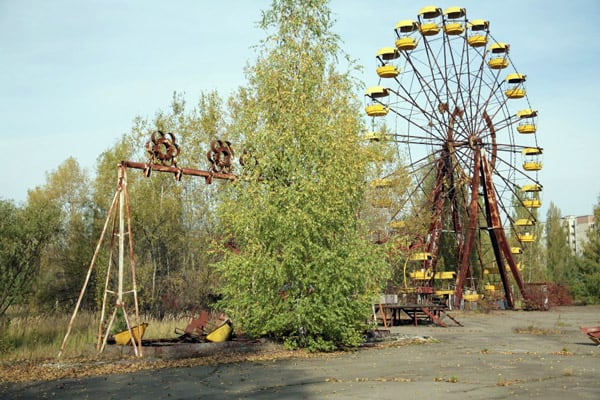
Icehotel, Sweden
Icehotel – a world famous hotel and an art exhibition made of ice and snow. Founded in 1989, it is reborn in a new guise every winter, in the Swedish village of Jukkasjärvi – 200 km north of the Arctic Circle. The Torne River, the arts, and creating a setting for life-enriching moments are at the heart of it all.
Via Icehotel
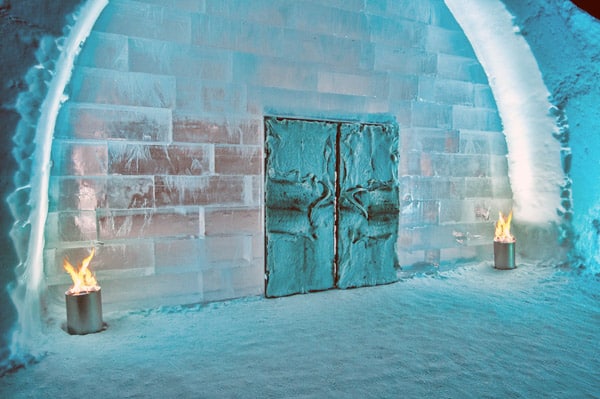
Madagascar, East Africa
Forget Hollywood fripperies, Madagascar is like no place else on earth. It is fantastically beautiful, amazingly diverse for its size (similar to France) and still so unspoiled. Vast tracts of the country are virtually uninhabited and seldom explored, and nothing comes easy. But that's what makes it so unique and rewarding.
Via Lonely Planet
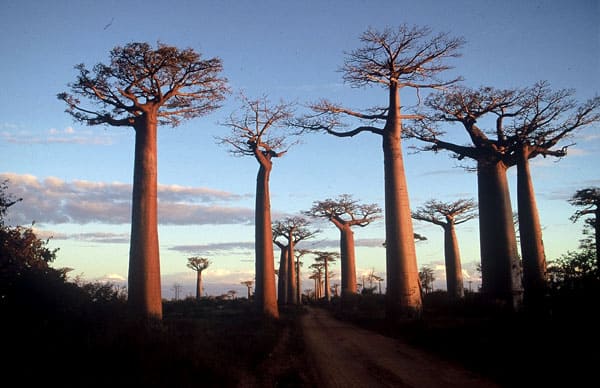
Glass Beach, California, USA
There are actually three glass beaches — all former city trash dump sites — that cough up beautiful sea glass. From 1906 to 1967, everything from cars to batteries to bottles, cans, and appliances were unceremoniously pushed over the cliffs into the ocean — a common practice of seaside cities for centuries. Mother Nature responded to this abuse with a nice surprise in the form of smooth, colored sea glass treasure in a rainbow of colors.
Via Fort Bragg
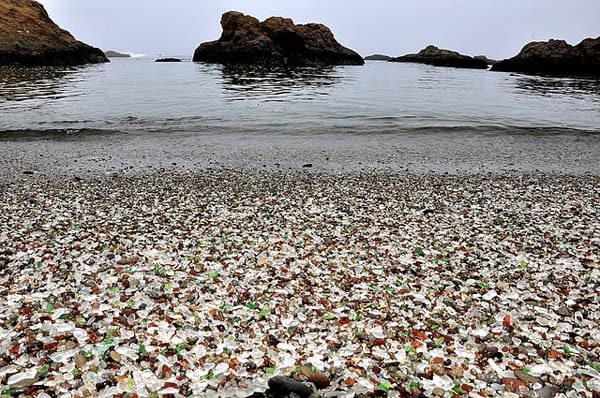
Hobbit Village, New Zealand
In 2009, Sir Peter Jackson returned to film The Hobbit trilogy, and he left behind the beautiful movie set you’ll see today; 44 permanently reconstructed Hobbit Holes, in the same fantastic detail seen in the movies.

Kawachi Fujien Wisteria Garden, Japan
Kawachi Wisteria Garden (河内藤園, Kawachi Fujien) is a private garden in the wooded hills south of central Kitakyushu, famous for its spectacularly presented, large numbers of wisteria flowers. The garden is opened to the public seasonally during the wisteria season which usually peaks around late April to mid-May and during the maple leaf season in autumn.
Via Japan Guide
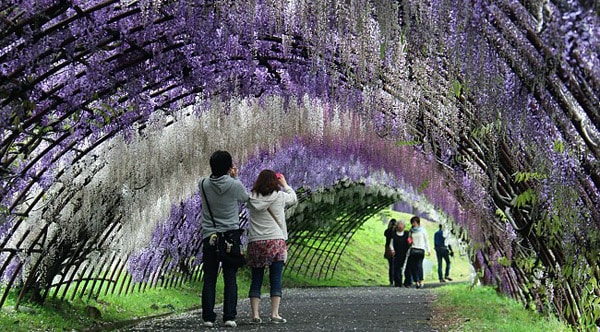
Plitvice Lakes, Croatia
Every season has its own unique charm and the Plitvice Lakes with their alternating colors and every new awakening, both trapped in ice or in the shade of the trees, will leave you with a very distinct, unique and invaluable impression. The Plitvice Lakes are constant, yet always different, and they will surely surprise you with a new experience or new revelation.
Via The Plitvice Lakes National Park
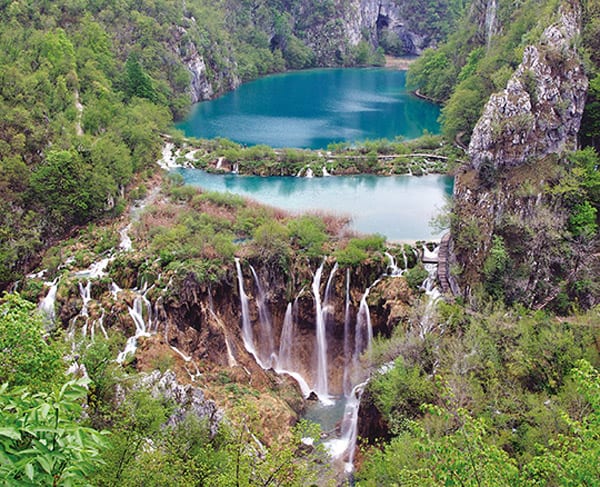
Myra Rock Tombs, Lycia, Turkey
These are the most numerous of all types of Lycian tombs and some are perhaps the most visually striking – elaborate funeral chambers carved directly into the rock face, usually into a cliff. Most often, the tombs are carved like the facade of timber Lycian houses with protruding beams (house-type tombs), usually with one or two stories, sometimes three.
Via Lycian Turkey
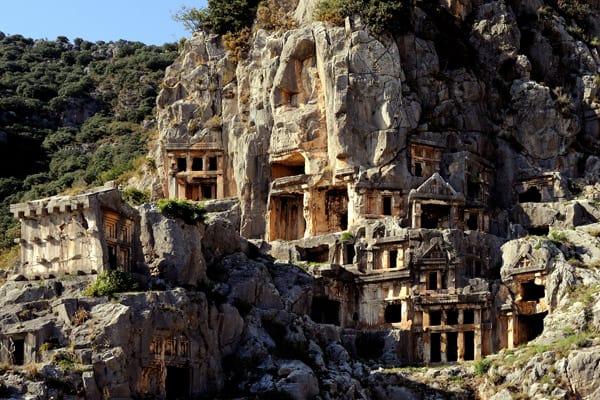
Lichtenstein Castle, Germany
Lichtenstein Castle is a historicist castle built in the 19th century. It is located at the edge of the Swabian Alps, 817 meters above sea level. Built to pay homage to medieval times, Lichtenstein Castle is also known as “Württemberg´s fairytale castle” as it adheres to romanticism in style and furnishing.
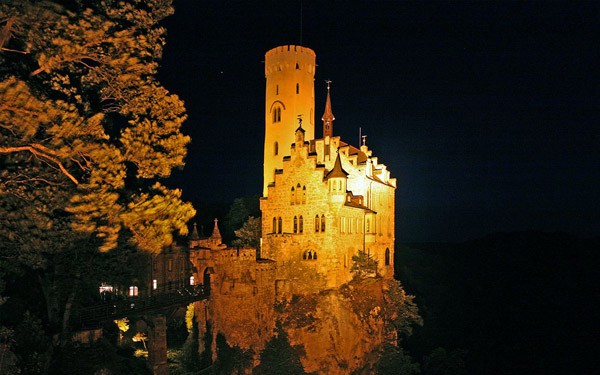
Darvaza Gas Crater, Turkmenistan
In 1971 in the Karakum desert, not far from the Darvaza village (also known as Derweze) that is translated from Turkmen as ‘gate’, Soviet geologists started to drill at the site where they tapped into a cavern filled with natural gas. During the drilling an accident happened, equipment and transport fell down in a big hole. No one was injured, but there was gas coming out of the hole. Fearing that the hole would lead to the release of poisonous gases, the team decided to burn it off. They hoped that the fire would use all the fuel within few days, but weeks, months and years passed, and it is still burning today.
Via Advantour
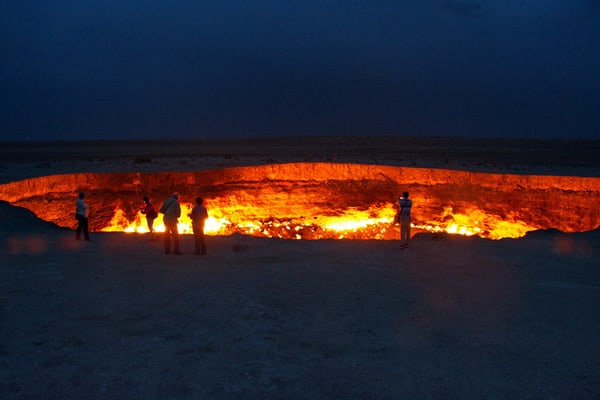
Dubai Palm Islands, UAE
A series of three islands; namely Palm Jumeirah, Palm Jebel Ali and Palm Deira complete the ‘The Palm Islands Resort' Project. All the three islands are shaped in the appearance of a date palm tree that consists of a trunk, a crown with fronds, and crescent islands that acts as a breakwater. The primary reason for constructing The Palm Islands was to utilize and increase the flourishing tourism in Dubai by providing tourists world-class hotels, entertainment centers, Dubai spas and health centers, marinas, water parks, residential villas, shopping malls, cinema multiplexes, diving sites and all the necessary amenities that go with it.
Via Dubai
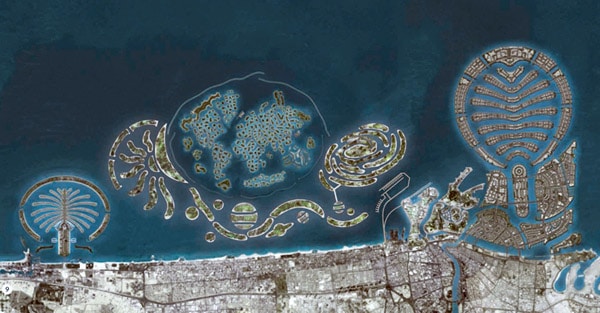
Aren’t these unique travel destinations, wild? Who would have thought that these places even exist? Makes you want to hop on the next plane and see them for yourself, right?

28 Iconic Places To Travel In Europe
12 Unconventional European Cities To Visit
Top 20 World's Most Incredible Festivals to Experience in your Lifetime
